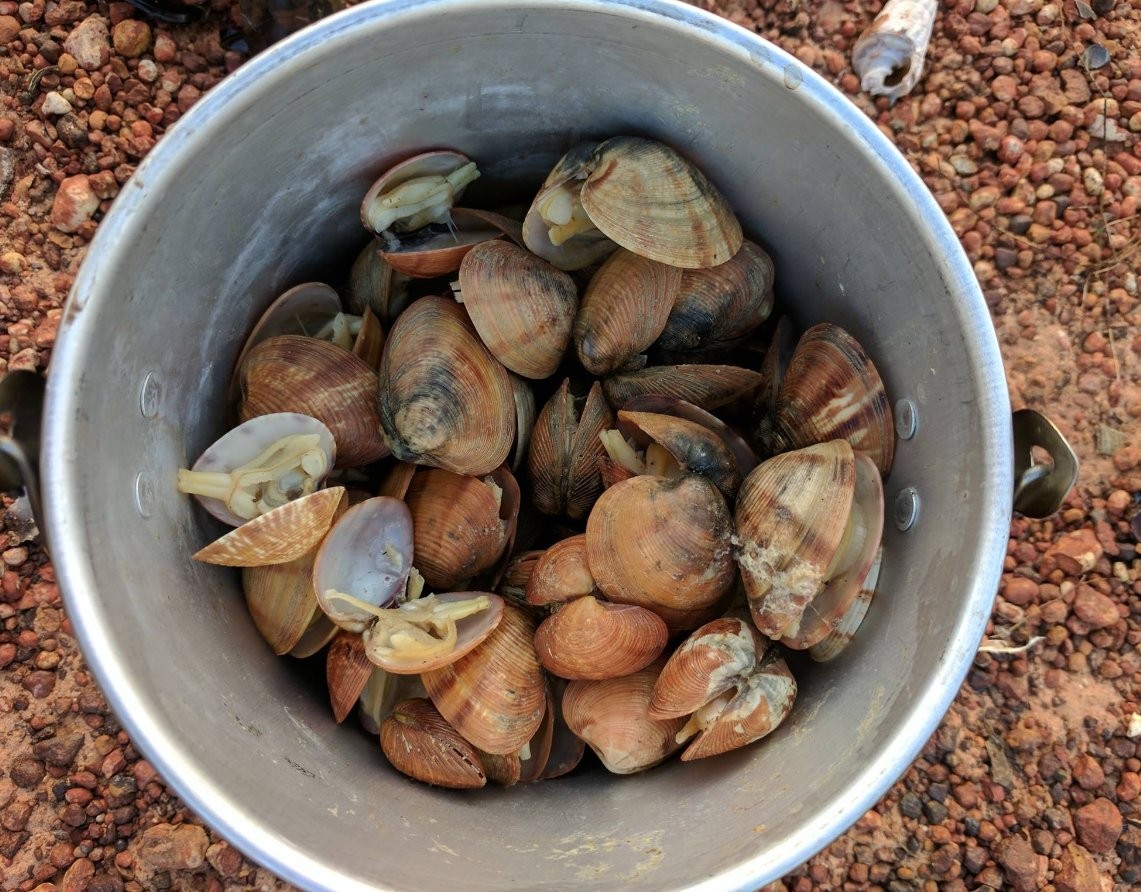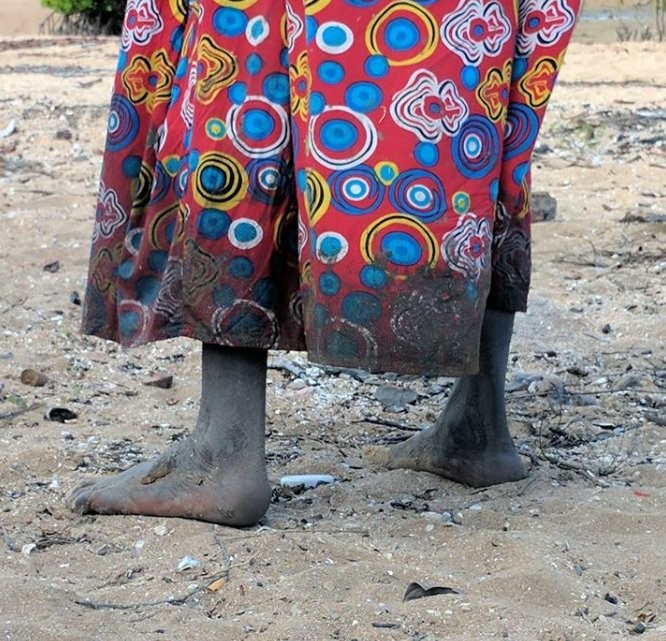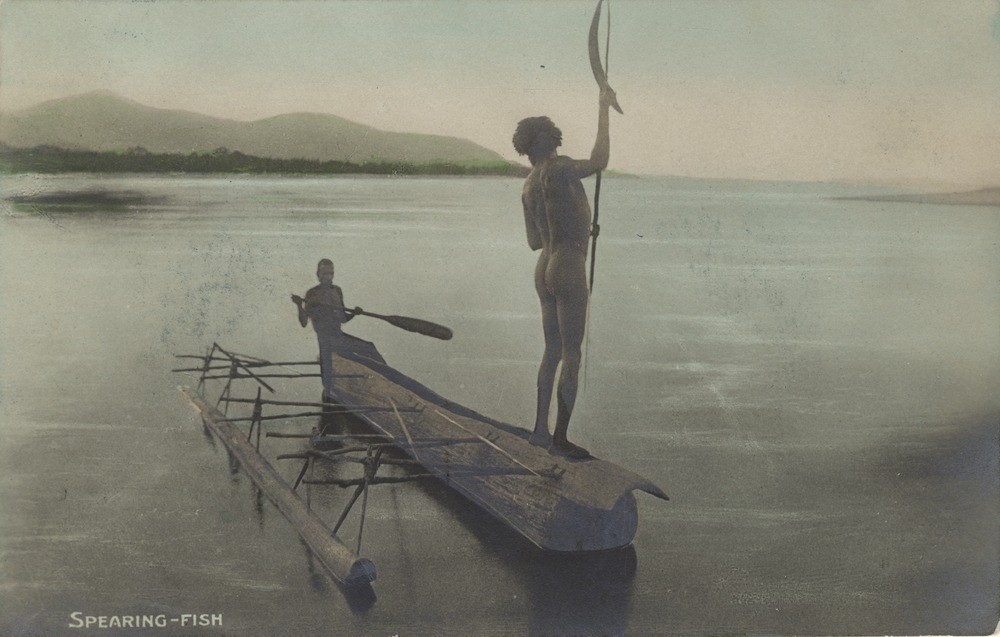Diving into the History of Queensland's Pearl Shelling Industry - The first Pearling trade in Australia
By JOL Admin | 20 October 2017
Guest blogger: Toni Massey - 2017 Queensland Business Leaders Hall of Fame Fellow
Australia’s pearling industry began long before European settlement where pearl shell was used extensively in trade throughout Australia. Archaeological evidence demonstrates that Aboriginal Australians were some of the first people that valued and appreciated the beauty and uniqueness of the pearl shell. Aboriginal and Torres Strait Islander people inhabiting the Australian coastline harvested the abundant pearl shell from shallow waters and had a well-established trading network for the shell. The oldest evidence of this can be seen in a 22,000 year old piece of shell found in a West Kimberley rock shelter, which had been brought 200 kilometers from the coastal shoreline to the shelter.1

Northern Territory shellfish. Photo courtesy of Rebecca Amery
Results from further archaeological excavations have found that Aboriginal people had an established economic relationship with the marine environment in Australia over many thousands of years. Shell midden deposits and rock art illustrate a detailed knowledge and broad use of the marine resources. The evidence of pearl shell use (among other shellfish) and fish remains also demonstrates Aboriginal groups knew about the seasons, abundance and dispersal of these resources, and they developed technologies that allowed them to hunt, catch, and collect them. Complex traditional environmental and sacred knowledge of the sea and offshore areas also demonstrates well-established maritime traditions in Aboriginal and Torres Strait Islander society.2 These maritime traditions are still evident today, such as in the Yolngu community in Northern Territory (see below).

Yolngu women from the Northern Territory collecting shellfish. Photo courtesy of Rebecca Amery
On voyages to northern Australia gathering trepang (sea cucumbers or bech-de-mer), trochus (sea snails) and turtle, fishermen from Macassar in south Sulawesi also began collecting pearl shell. Northern Territory rock art suggest these journeys represents perhaps the earliest exploitation of Australian pearl shell and the meeting between their fleet and Flinders, in 1803 is well known.3 Recent beeswax dates suggest this contact with Indonesian mariners likely began sometime in the mid-seventeenth century.2
Pearl shell had been harvested and prized by Aboriginal people for thousands of years. Since the min-1800s riji (carved pearl shell) was exchanged extensively between Aboriginal communities across northwest and central Australia. Decorative use of pearl shell included pearl shell ‘beads’ which was threaded together to form headbands. Other use of pearl shell include tools to soften leaf strips used to make mats, and baskets and as general purpose scrapers, cutters and even ladles to scrap out coconuts.4
Early European exploration of Torres Strait documented Islanders wearing pearl shell chest ornaments, which they called mai (Eastern Islanders) or danga mai (Western Islanders).4 This was also reported in Western Australia where in 1864 ‘necklaces of large pearl shells’ worn by local Aboriginal people aroused early interest in the pearl shell industry.3 The arrival of Europeans in Australia in the nineteenth century, found coastal Aboriginal Australians were already accomplished seafarers who not only used pearl shell for ornaments, tools and trade but were also equipped (in some cases) with dugout canoes.

Two Aboriginal Australian men spear fishing from an outrigger canoe. John Oxley Library, State Library of Queensland. Image 4831-0001-0027
Records illustrate that some Aboriginal and Torres Strait Islander people even participated in the trepang fishing industry and worked as crew aboard Indonesian sailing vessels with a number developing skills and a familiarity of European maritime sailing technologies.2
Toni Massey
Toni Massey was the recipient of the 2017 Queensland Business Leaders Hall of Fame Fellowship for her project Diving into the history of Queensland’s pearl-shelling industry. As a commercial diver and marine archaeologist herself, Toni’s project will examine how Queensland pearl divers pioneered the pearl shelling industry and in doing so, contributed to Queensland’s economic development. The project will also investigate the history of the major companies that enabled the industry to thrive.
References:
- McCarthy, M. 1994. Before Broome, The Great Circle 16 (2): 76-85.
- Wesley D., McKinnon J. & Raupp J. 2012. Sails Set in Stone: A Technological Analysis of Non-indigenous Watercraft Rock Art Paintings in North Western Arnhem Land. Journal of Maritime Archaeology, Vol. 7, No.2 pp 254-269.
- Bach, J. 1955. The Pearling Industry of Australia: An Account of its Social and Economic Development. N.S.W. University of Technology, Newcastle.
- McPhee, E. 2004. Archaeology of the Peal Shelling Industry in Torres Strait. Memoirs of the Queensland Museum Cultural Heritage Series, 3(1): 363-377. Brisbane.
Comments
Your email address will not be published.
We welcome relevant, respectful comments.